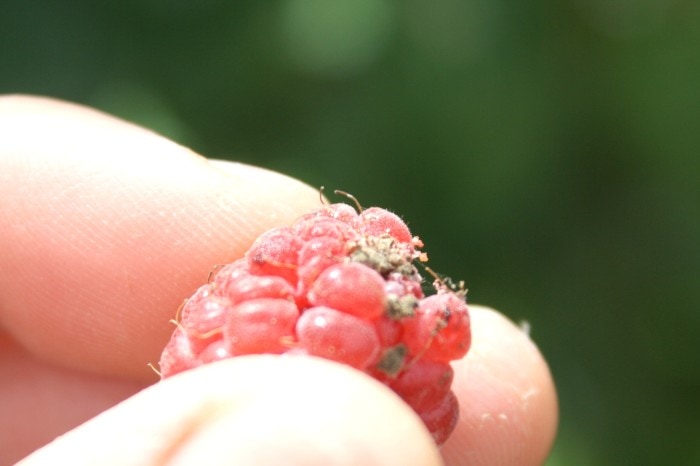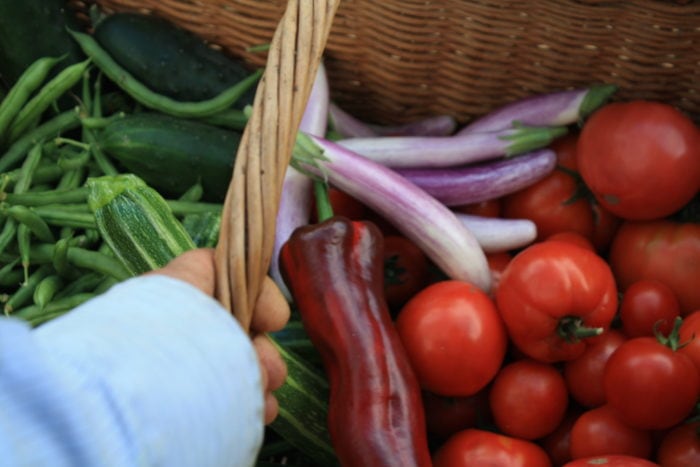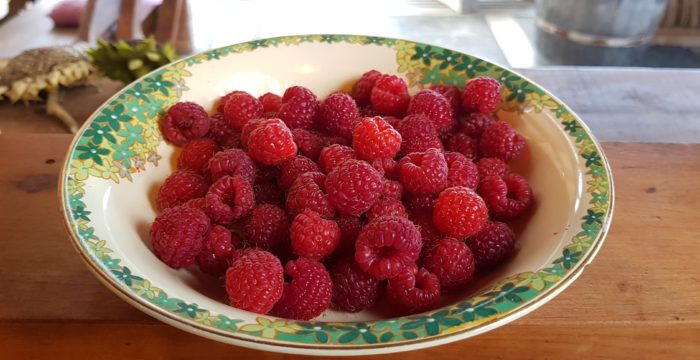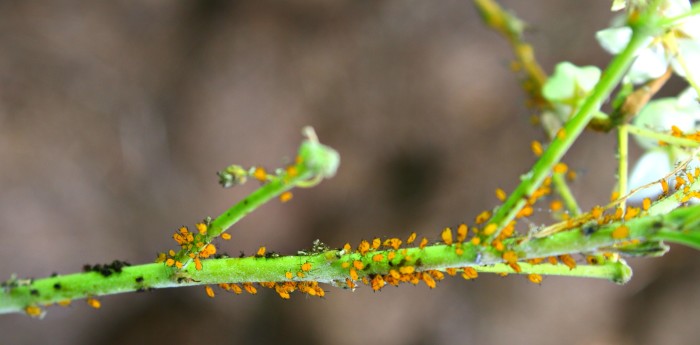Break The Pest Cycle


Pests are part of a gardening life - especially when your vegie patch is full of all their favourite food. Add to that a bit of stress like drought for instance, and immunity and pest resistance are lowered, fanning the flames and increasing the likelihood of high numbers of sap sucking, fruit gobbling critters. With a few simple tricks up your sleeve you can moderate pest numbers in the short term. Today I have 4 measures to help you weather the rest of summer.
Long term look to all your garden's foundation. Rest assured that as you build soil, develop a diverse range of companion plants, get your sowing and planting timings down and discover varieties that suit, the pest burden will shift.
Truth is, it will always be shifting. Because of this, stay open to evolving how you manage your pests. One fine day, you'll decide your garden is strong enough and diverse enough to self manage the pests.
Ditching artificial fertilisers and pesticides is a potent way to reduce sucking insects. Ironically the most heavily sprayed gardens are the most pest laden. Too much fresh manure (including liquid manure teas), not enough air in clay soil and under or over-watering are 3 other pest inducing favourites.
Here are 4 immediate ways to bust inside that egg-larvae-adult-sex-birth cycle, and keep numbers down.
1. A daily harvest

So simple, so obvious - harvest daily. Get out every morning and remove the newly ripe. What a difference!
Plucking a newly ripe berry with a tiny hole is a small victory. Left another day that tiny hole becomes several and now you've invited in a whole new guild of pest. Perhaps begun by a shield bug, taken over by earwigs and fruit flies = raspberries full of worms.

Dinner is the very thing every living thing on earth needs to build a strong population. A daily harvest removes the pest's dinner - slowing down those munching, sucking critters - and brings you yours ... food in it's prime.
Remove the not so great as well
It's tempting to harvest only the good and ignore the not so good, but its important to pick them all. Leaving the over ripe, holey, mouldy, funky ones leaves food and nesting sites for pests, and if disease is present harbour that as well. Picking them off is another way to break the cycle.
I harvest with 2 bowls - one for the chooks and one for me.
2. Digital control
Two jobs with one walk - as you go about your daily harvest, another simple pest control method asserts itself - catch those pests between your digits! Don't underestimate the value of this simple measure. This works for shield bugs, cabbage white caterpillars and aphids.
The joy of little and often is that you don't need to nail every single pest in the one walk. Just do those you see. Get the others tomorrow, or the next day, or the next.... Its not about getting rid of anything, its about easing the population to ease the load on your plants.
3. Crop Covers
Insect mesh is the cats pjs - a wonderful barrier between the crops and pests. Check out my Goods and Gurus page for suppliers. Use 0.6mm weave for spray free, hands off pest control of once harvested crops like spuds (psyllids) and brassicas (cabbage butterfly) and carrots (carrot fly).
4. Neem

Pest populations explode when your garden is young and without the beneficial insect pest control team or when you haven't quite got your eye in as yet and miss the early signs... it'll come.
Meantime, your options are to either let the pest go. So interesting! Or, if thats not feeling good for you, reach for the Neem. It's gentle on your beneficial insect populations, unlike touch-it-and-die, knock-everything-dead killers like pyrethrum, rhubarb or garlic, never mind chemical options.
To work, Neem must be ingested by the pest, so its about spraying the foliage rather than the pest itself.
For efficacy you need to:
- Spray every week in a religious fashion to keep up with new eggs hatching until the pests ebb away. At that point stop.
- Spray again at the first stirrings of new populations throughout the summer.
- Be polite, and spray in the evening when the bees have gone to bed, or in the morning before they come to work.
Tough customers
Passionvine hoppers require less Neem at the young nymph (fluffy bum) stage - adults require dedication, needing every three days, as do bronze beetles and shield bugs. If populations are strong use Neem granules as well.
Heres a Good Read about my long-term pest reducing ways.
https://www.ediblebackyard.co.nz/natural-ways-with-pests/
